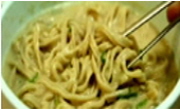Silk is a plain woven fabric created from raw material drawn from cocoons, woven with weft and warp, and is the only textile created from animals. The ancestral tradition of raw silk weaving from our ancestors has been passed on to the present day. Ho...
http://chineseinput.net/에서 pinyin(병음)방식으로 중국어를 변환할 수 있습니다.
변환된 중국어를 복사하여 사용하시면 됩니다.
- 中文 을 입력하시려면 zhongwen을 입력하시고 space를누르시면됩니다.
- 北京 을 입력하시려면 beijing을 입력하시고 space를 누르시면 됩니다.
傳統明紬의 正統性과 繼承方案 : 慶州頭山마을 新羅明紬를 中心으로 = Legitimacy and passing on the tradition of traditional silk : Centered on Silla Silk from Dusan Village, Gyeongju City
한글로보기https://www.riss.kr/link?id=T13861599
- 저자
-
발행사항
경주 : 慶州大學校 一般大學院, 2017
-
학위논문사항
학위논문(석사) -- 慶州大學校 一般大學院 , 문화재학과 , 2018.2
-
발행연도
2017
-
작성언어
한국어
-
주제어
전통명주 ; 정통성 ; 계승방안 ; 경주 ; 두산마을 ; 신라명주 ; traditional silk ; Silla Silk ; Dusan Village ; Gyeongju City
-
발행국(도시)
경상북도
-
형태사항
; 26 cm
-
일반주기명
지도교수: 정병모
-
UCI식별코드
I804:47022-200000017503
- 소장기관
-
0
상세조회 -
0
다운로드
부가정보
다국어 초록 (Multilingual Abstract)
Silk is a plain woven fabric created from raw material drawn from cocoons, woven with weft and warp, and is the only textile
created from animals. The ancestral tradition of raw silk weaving from our ancestors has been passed on to the present day.
However, the reality is that the traditional silk making technology is disappearing due to mechanization and cost-saving
reasons brought on by industrialization. Therefore if we don’t preserve and protect our heritage, it will soon be extinct.. I have
researched the history of silk, from prehistoric times to the Joseon Dynasty, by examining silk related documents and
quoting original texts.
In addition, after examining the traditional succession of Dusanri silk, I have observed the manufacturing process,
examined genre paintings of Gisan as well as old pictures and have compared the legitimacy of Dusan silk. After researching
on original Dusanri traditional hand made silk method, I proposed a basic framework for searching a plan to pass on
this tradition and continuously preserve and protect it as an intangible cultural heritage.
If silk has the historical properties and legitimacy to be an intangible cultural heritage, I propose this plan to make silk
making techniques designated an intangible cultural heritage and continuously preserved and passed on.
“Annals of Joseon Dynasty” replica, which was carried out as a national policy project for 2012~2013 cultural restoration.
In order to mark the replica of part of the “Annals of Joseon
Dynasty“ records, a total of 97 royal palace books (3 books of King Danjong, 32 books of King Sejo, 2 books of King Yejong,
and 60 books of King Seongjeong), they used 13 new silks woven with a traditional loom using 10 marks of 2013 and 10
marks of 2013, and these were verified to have been used in the “Annals of Joseon Dyansty”.
A standard method of weaving Dusanri traditional silk were recorded in the “Annals of the Joseon Dynasty," and these
traditional techniques and methods have been passed on until the present day. And their historic legitimacy has been verified
through document researches. A necessity is felt to preserve this
tradition as an intangible cultural heritage and we need to look
into ways to educate people on traditional cultural heritage, make it into a tourism resource and industrialization.
Consequently, my research study was conducted under the following purpose.
I have looked into a plan to pass on Doosan Silk tradition as it is a local specialty in the sense that it is connected to cultural industry.
I proposed an alternative tourism development plan to create
tourism resources of traditional culture, thus creating jobs for local people and increasing income.
As the number of artisans producing funeral clothes is
decreasing sharply today, and we feel that tradition will not be passed on, we sense a dire need to invest and focus our
interests in historical and cultural resources.
I hope that the hand woven silk work will help increase the dignity and self-respect of grandmothers who have woven silk for many decades. Hand silk has superior quality and is very scarce, so I believe this is a great opportunity to think about the plans for silk weavers to pass on this tradition.
Furthermore, I hope that Dusanri Silk is revisited and contributes to revitalizing local culture. Based on this, I sincerely hope it leads to a path that will eventually attract tourists, contribute in beneficially commercialize culture, create jobs and increase local income in the region.
목차 (Table of Contents)
- Ⅰ. 머리말 1
- 1. 문제제기 1
- 2. 연구목적 4
- 3. 연구방법과 범위 5
- Ⅱ. 우리나라 명주의 역사 7
- Ⅰ. 머리말 1
- 1. 문제제기 1
- 2. 연구목적 4
- 3. 연구방법과 범위 5
- Ⅱ. 우리나라 명주의 역사 7
- 1. 선사시대 8
- 2. 삼국 및 통일신라시대 11
- 3. 고려시대 21
- 4. 조선시대 22
- Ⅲ. 두산명주의 정통성 25
- 1. 전통명주의 특성 25
- 2. 전통명주로서 두산명주의 현황 27
- 3. 두산명주의 정통성 38
- Ⅳ. 전통명주의 계승과 활용방안 57
- 1. 전통명주로서 두산명주의 가치 57
- 2. 전통명주 계승을 위한 무형문화재 지정 88
- (1) 무형 문화재로서 두산리 전통명주의 가치 89
- (2) 무형문화재 단체지정 필요성 92
- 3. 두산명주의 활용방안 93
- Ⅴ. 맺음말 103
- Ⅵ. 참고문헌 106









